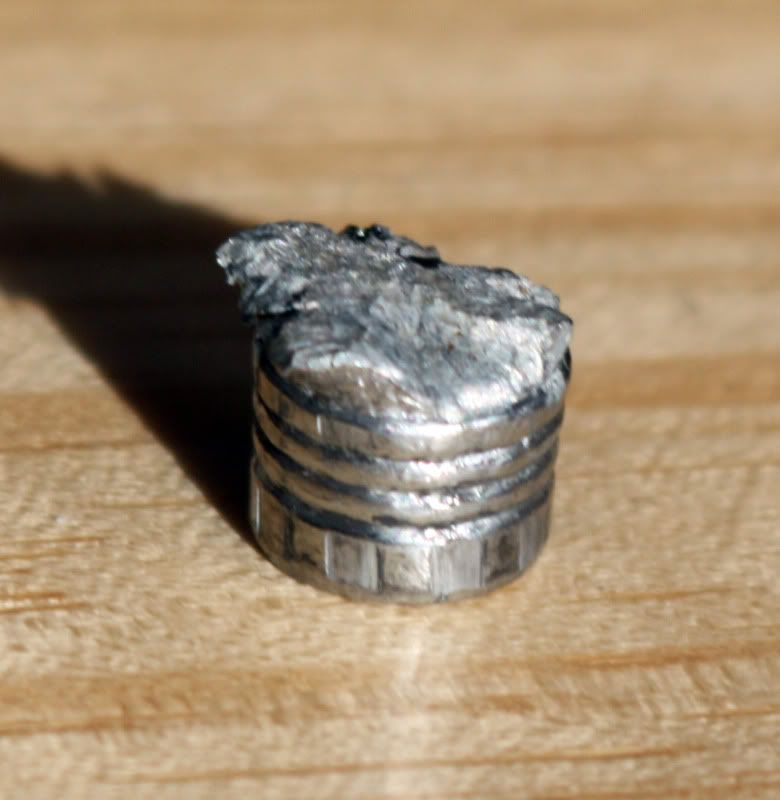well played around with the little zinc I had left in the pot last night, now I'm thinking there is no problem then you add lead all by itselfs as when I added pure lead it seemed to melt right into the mix no problems but then I tried to add some WW lead and it did the oatmeal thing the zinc does when it's in lead but the flux seems to remove it I'm guessing it only leaves the zinc but I don't know. I emailed allient powder to see if they had an data for me so I'll just have to wait for them to get back. Also the bullets came in same as the lead around .358 if only they cast to .356

|
   
   
|


|



 Reply With Quote
Reply With Quote
















